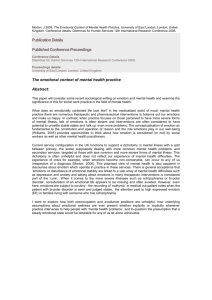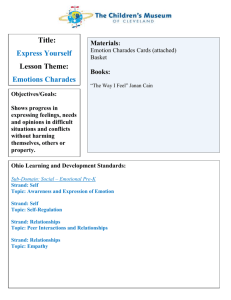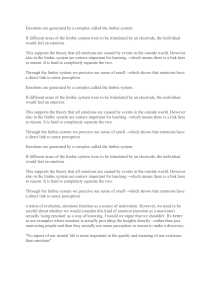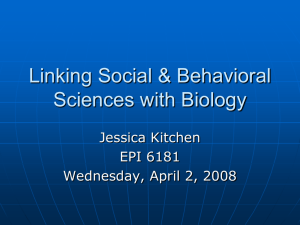Neuroscience 16b – Emotion
advertisement
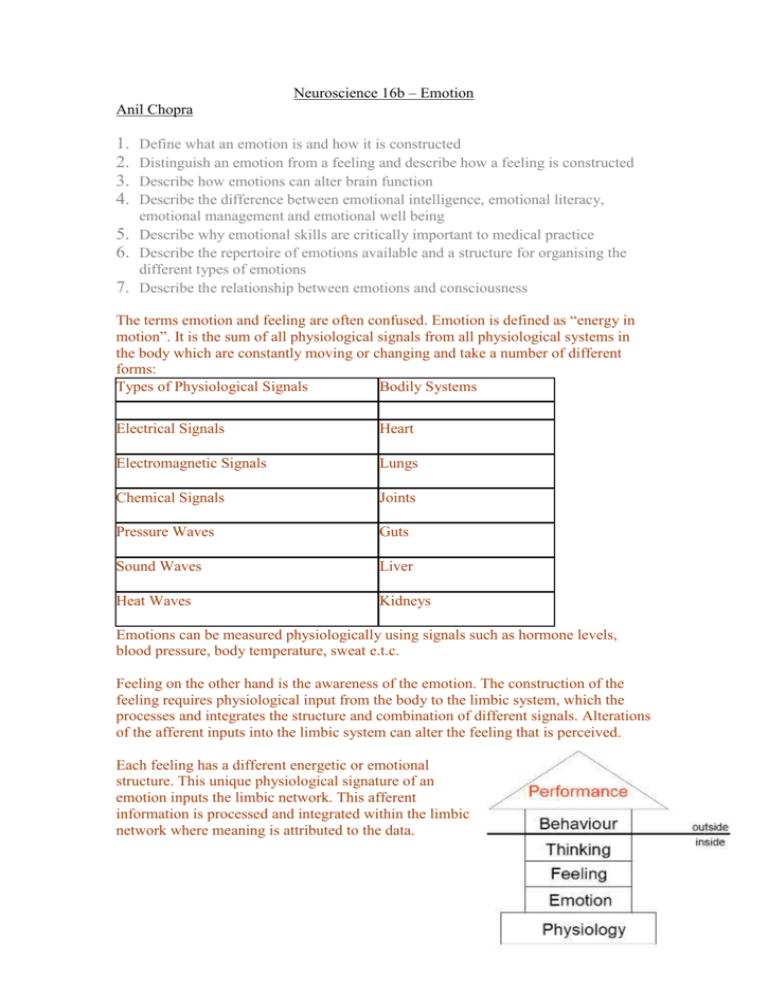
Neuroscience 16b – Emotion Anil Chopra 1. 2. 3. 4. Define what an emotion is and how it is constructed Distinguish an emotion from a feeling and describe how a feeling is constructed Describe how emotions can alter brain function Describe the difference between emotional intelligence, emotional literacy, emotional management and emotional well being 5. Describe why emotional skills are critically important to medical practice 6. Describe the repertoire of emotions available and a structure for organising the different types of emotions 7. Describe the relationship between emotions and consciousness The terms emotion and feeling are often confused. Emotion is defined as “energy in motion”. It is the sum of all physiological signals from all physiological systems in the body which are constantly moving or changing and take a number of different forms: Types of Physiological Signals Bodily Systems Electrical Signals Heart Electromagnetic Signals Lungs Chemical Signals Joints Pressure Waves Guts Sound Waves Liver Heat Waves Kidneys Emotions can be measured physiologically using signals such as hormone levels, blood pressure, body temperature, sweat e.t.c. Feeling on the other hand is the awareness of the emotion. The construction of the feeling requires physiological input from the body to the limbic system, which the processes and integrates the structure and combination of different signals. Alterations of the afferent inputs into the limbic system can alter the feeling that is perceived. Each feeling has a different energetic or emotional structure. This unique physiological signature of an emotion inputs the limbic network. This afferent information is processed and integrated within the limbic network where meaning is attributed to the data. Emotions altering Brain Function All of our thinking occurs in the context of our emotions. This is why our thoughts can be distorted by our emotions. People in pain think differently when that pain is relieved. For example, the electrical signal generated by the heart and its constant variation can impair thought. As the heart rate variability (HRV) pattern becomes more chaotic there is an inhibition of the frontal cortex. This forms the basis of brain dysfunction under pressure, like going blank in an exam. In fact if the limbic network perceives any kind of threat (the amygdale is critically involved in this process) then the HRV signal becomes chaotic very quickly. Different people are able deal with emotions in different ways: 1. Emotional Intelligence Awareness of your own emotions (feeling!) in day to day life plus other skills (impulse control, self-motivation, empathy & relationship skills) 2. Emotional Literacy The ability to label what you are feeling correctly 3. Emotional Management The ability to change the way you feel deliberately 4. Emotional Well Being The ability to generate & sustain a positive balanced emotional state. A measure of emotional intelligence is heart rate variability HRV. It is very important because it can predict illness and ill health. The signal generated by the heart and its constant variation can impair thought – heart rate becomes more variable when there is inhibition of the prefrontal cortex forming the basis of the brain dysfunction when under pressure. E.g Chaos: Coherance: The main activation area in positive emotions is the left superior prefrontal cortex.





